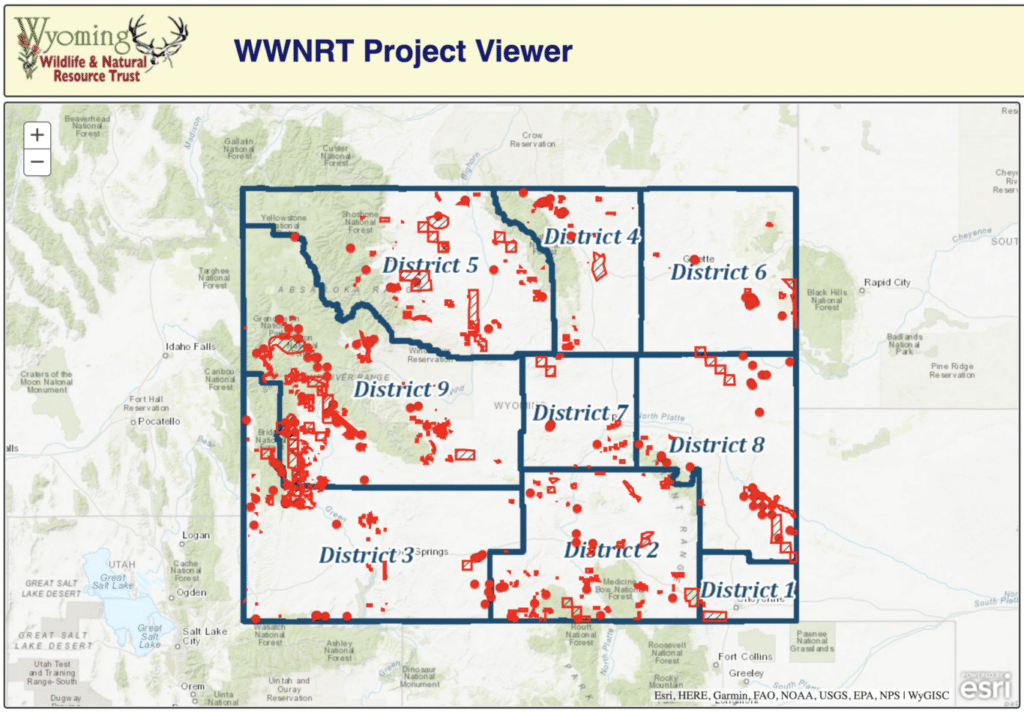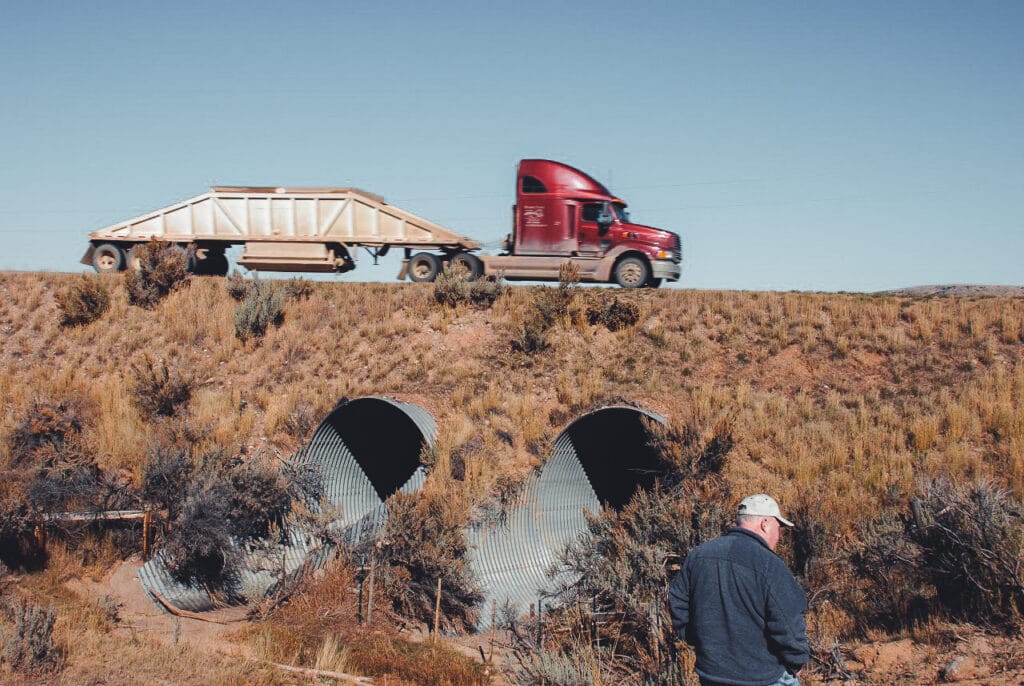Header Image: Mule deer winter along the East Fork of the Wind River where WWNRT has helped fund multiple habitat projects. Photo by Jess Johnson
The way Wyoming allocates hunting licenses has been a point of contention over the last decade with various bills brought forth and contested. These allocation discussions divide current sporting opportunities between different interested parties like slicing a pie differently. At the July 19 meeting in Casper, members of the Wyoming Wildlife Taskforce addressed the fact that this approach is not proactive – it does not look at creating a “larger pie” by conserving wildlife populations.
No matter how the pie is sliced for species like moose, bighorn sheep, mountain goat, and bison, there is not enough total wildlife to ensure everyone who wants an opportunity to pursue these critters can have a chance. A better solution? Put more wildlife on the ground.
The Taskforce agreed that total opportunity in the long-term was a solution everyone could support. As a result, they unanimously voted to fully fund the Wyoming Wildlife and Natural Resource Trust (WWNRT) as a first step to conserving wildlife populations and therefore increasing hunter opportunities across the board.
What Is WWNRT?
Created in 2005, WWNRT is a program to enhance and conserve wildlife habitat and natural resource values throughout the state. WWNRT funds valuable projects to restore rivers, rehabilitate wetland areas, and maintain sustainable agricultural operations with livestock water systems and other improvements to aid in cattle production and distribution. Some of the largest WWNRT projects include helping fund crucial wildlife crossings infrastructure, as well. Plus, they help make fences wildlife-friendly, purchase conservation easements, and support other habitat enhancement projects.

Since its inception, WWNRT has aided wildlife and wildlife habitats to the tune of $96,600,000. In 2021 alone, the WWNRT helped fund more of the Dry Piney Mule Deer Crossings Project, the I-25 Kaycee to Buffalo Mule Deer Crossings project, and invasive grasses removal on 50,000 acres of hunting and fishing walk-in areas near Sheridan.
Simply put, WWNRT is a great funding tool for important wildlife work.
Why Is Fully Funding WWNRT Important?
WWNRT acts as an endowment by operating on the interest earned by the fund, so it is sustainable and a self-perpetuating agency. It was intended to be fully funded at $200M, though the fund never has hit that amount and currently sits around $115M. That means a one-time injection of $85M will keep the fund working to conserve wildlife and habitats around the state in perpetuity. The Taskforce recommending it be fully funded has huge implications for the future of Wyoming conservation.

WWF Gov’t Affairs Director, Jess Johnson has attended all of the Taskforce meetings in person and has been deeply involved in these conversations surrounding license allocation.
“The Taskforce’s unanimous decision to fund WWNRT shows we can prioritize increasing total hunter opportunities by having healthier wildlife populations across the state instead of fighting over the scraps of current license allocations,” says Jess.
We applaud the Wyoming Wildlife Taskforce’s recommendation to fully fund WWNRT. The Wyoming Wildlife Federation encourages all legislators to support fully funding WWNRT. Please contact your elected officials in support of WWNRT, especially when the legislative session arrives next January so we can support healthier wildlife populations well into the future.
The Wyoming Wildlife Taskforce meets again on September 1, 2021, in Casper, WY. If you are like many of the WWF staff and will find yourself with a bow in hand that day, or otherwise cannot attend, please send in public comments regarding Wildlife Taskforce topics electronically.
